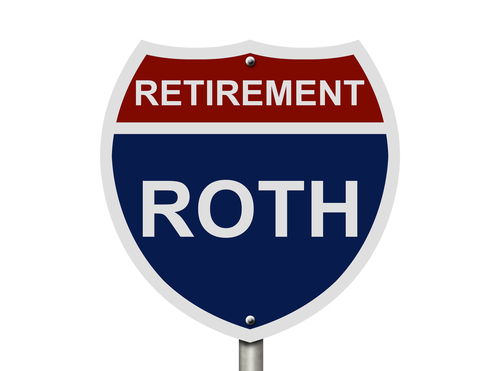Many have heard Phil Cannella on the radio or at educational events speaking about the “Roth IRA” at some point or another, but we all often have more questions. In this Q&A interview, Phil Cannella answers the questions about the Roth IRA that a lot of us have had all along.
Question: We hear a lot about the difference between a regular IRA and a Roth in terms of wealth preservation. Could you clarify?
Phil Cannella: It’s simple. If you want to preserve as much of your assets as possible, you ideally want to position your retirement account as a tax-free account. And if you have a traditional IRA, that means converting it to a Roth. It may not be feasible for you to convert your traditional IRA to a Roth IRA in one lump sum, but the IRS allows for partial conversions, so you might want to convert just enough each year to keep you under the next income bracket, because the IRS counts the converted amount as income.
Q: Can I add as much as I want?
Phil Cannella: You can increase your conversion incrementally every year—$25,000, $50,000, or by whatever amount that keeps you below the next tax bracket. There are restrictions for conversion: You have to be under a certain income level in order to convert—around $100,000 for a single person. But get this: In 2010, that income restriction went away for a year. You could make as much income as you want and still convert your traditional IRAs to Roths. And even better—you could spread the tax bite over two tax years. In other words, if you converted a $100,000 traditional IRA into a Roth in 2010, and you owed a $30,000 tax bill on the conversion, you could put off paying any taxes on the conversion for the entire year. Even better, you can split the tax payment over the next two years, paying $15,000 for the 2011 tax year and $15,000 in the 2012 tax year.
Q: Why didn’t I hear this?
Phil Cannella: If your advisor didn’t tell you that, he or she simply wasn’t paying attention.
Q: Does everyone get to convert to a Roth?
Phil Cannella: The single most frustrating thing about my financial practice is that I can convince relatively few of my clients to convert their traditional, tax-infested IRAs to tax-free, Roth IRAs. Most people simply do not want to pay that tax bill up front, even if they can easily afford it. They are content to pay the taxes on their retirement account balances as they withdraw the money.
Q: Huh. How odd. Well, give me an example.
Phil Cannella: Billy is one of my favorite clients of all time. He’s a 78-year-old former hardware store owner, a widower with four children and 12 grandchildren. Billy has a sizeable asset portfolio, and like many retired Americans, much of it is in traditional tax-infested retirement accounts. He’s one of my favorite clients because he’s got a smile like a summer day at the beach, and he always lights up my staff and myself with his quick wit and positive outlook when he comes in to see us. One day we were talking about Roth conversion, and I was showing him some examples about how converting a portion of his accounts to Roths could have an immeasurable benefit to his children and grandchildren.
“Phil Cannella,” he said, “we’ve talked about this before. I am not going to plunk down $75,000 to the government so I can have this Roth thingy. It just doesn’t make sense to me.” I told him, “But Billy, it makes all the sense in the world! If you pay the tax bill now, there will never be any taxes owed ever again on these accounts. You take the government out of the equation.” He replied, “Maybe not, but I just don’t buy it. Who’s to say that the government won’t just turn around, change their minds, pencil-whip a few pieces of paper through Congress, and we’ll still owe taxes on the whole damn thing anyway?”
Q: He’s a tough sell, huh?
Phil Cannella: Normally you don’t have to “sell” these products. If you just explain them, they sell themselves.
Q: But not to Billy.
Phil Cannella (shrugs): I tried to explain to him about grandfathering and how the scenario he described wouldn’t occur, but I couldn’t convince him and he would not go ahead with the conversion. In my opinion, and with all due respect to my friend Billy, this type of thinking is foolish. Why not remove all possibility of future taxation from those accounts? Using logical intelligence, we can see that the potential for gain down the road—especially with respect to your beneficiaries—is astronomical. And considering our economy and aging demographics, the tax bills on qualified retirement accounts will only grow. And that only means that you will be paying more taxes. The government has given us a way out in the form of a Roth conversion. In my expert opinion, everyone who has the opportunity and meets the qualifications and restrictions should take advantage of it.





